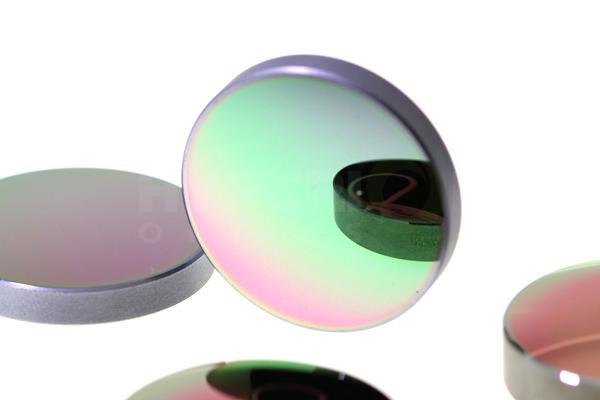The world of optical technology is rapidly advancing, driven by the need for more precise, efficient, and versatile optical components. Among these innovations, infrared (IR) aspheric lenses are playing an increasingly vital role. These lenses are specially designed to focus infrared light more efficiently, helping to enhance imaging and sensing applications in industries ranging from healthcare to aerospace.
In fact, the global market for infrared optics is expected to reach $10.3 billion by 2027, with a compound annual growth rate (CAGR) of 7.8%, reflecting the growing demand for these technologies. This article explores the numerous benefits of infrared aspheric lenses and their importance in modern optical systems.
What Are Infrared Aspheric Lenses?
Infrared aspheric lenses are optical components that are designed with non-spherical surfaces to improve the performance of infrared imaging systems. Unlike traditional spherical lenses, which have a uniform curvature, aspheric optics feature a surface that gradually changes curvature to reduce optical aberrations. This allows them to focus infrared light with greater precision and clarity, even in demanding environments. The benefits of infrared aspherics come from their ability to correct various distortions, including chromatic and spherical aberrations, that can degrade image quality in infrared systems.
These lenses are crucial in optical systems where high accuracy is required, particularly in applications that involve infrared light, such as thermal imaging, spectroscopy, and laser systems. In fact, aspheric lenses are often used in combination with other optical components to form complex systems that perform in challenging conditions, such as those found in aerospace, defense, and medical applications.
Key Benefits of Infrared Aspheric Lenses
Improved Image Quality
One of the primary benefits of infrared aspheric lenses is their ability to significantly improve image quality. Traditional spherical lenses often introduce aberrations, which distort the final image. Aspheric optics, on the other hand, are designed to eliminate these distortions, ensuring that infrared images are sharp and clear. This makes them essential in applications where precision imaging is critical, such as in military surveillance, medical diagnostics, and industrial inspection.
Compact and Lightweight
Another significant advantage of infrared aspheric lenses is their compact size and lightweight design. Aspheric lenses are capable of delivering the same level of performance as traditional spherical lenses but in a smaller form factor. This is especially important in applications like aerospace and automotive systems, where minimizing the weight and size of optical components can lead to significant improvements in efficiency and cost-effectiveness.

Higher Efficiency
Infrared aspheric lenses are designed to transmit infrared light more efficiently than traditional spherical lenses. This efficiency comes from their ability to focus light in a way that reduces losses due to reflection and refraction. By improving light transmission, infrared aspheric lenses help ensure that optical systems perform at their highest potential. This is particularly important in applications such as laser systems, where maximizing the intensity of light is essential.
Customizable for Specific Applications
Infrared aspheric lenses can be tailored for specific applications, making them highly versatile. Manufacturers can design these lenses to meet the exact requirements of different optical systems, ensuring optimal performance in a wide range of environments.
Whether it’s a high-powered thermal imaging camera for industrial use or a precise sensor for space exploration, infrared aspheric lenses can be customized to meet the needs of the application. The ability to produce custom aspheric lenses also helps address challenges that arise in specialized fields, such as medical imaging, where specific wavelengths of infrared light may need to be focused with great accuracy.
Applications of Infrared Aspheric Lenses
Infrared aspheric lenses are used in a wide variety of applications across numerous industries. Some notable examples include:
- Thermal Imaging: Infrared aspherics are critical in thermal cameras used for security, surveillance, and maintenance. They provide clear, high-quality images that help detect heat sources and identify potential issues, such as electrical faults or leaks in industrial systems.
- Aerospace and Defense: In these industries, infrared aspheric lenses are used for precise targeting and navigation systems, helping to improve the accuracy and functionality of infrared sensors in satellites, drones, and military surveillance equipment.
- Medical Imaging: Infrared aspheric lenses are used in medical devices like endoscopes and thermography systems. These lenses help to enhance the accuracy of medical diagnostics by providing clear, precise infrared images, which are crucial for detecting diseases like cancer or monitoring inflammation.
- Spectroscopy: In scientific research, infrared aspheric lenses play an essential role in spectroscopic analysis. They help researchers study materials by accurately focusing infrared light onto samples, allowing for detailed analysis of chemical compositions and properties.
Conclusion
Infrared aspheric lenses are revolutionizing the field of optical technology by providing improved image quality, compactness, efficiency, and customization for a wide range of applications. Their ability to focus infrared light with minimal distortion makes them an indispensable component in many advanced optical systems, from medical diagnostics to aerospace and defense. As the demand for infrared technology continues to rise, infrared aspheric lenses will play a crucial role in shaping the future of optics, offering innovative solutions for complex challenges across various industries.









